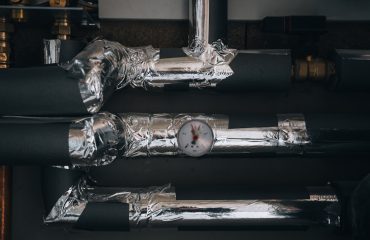Power plants, the backbone of modern energy infrastructure, demand robust and reliable construction materials. Steel profiles, with their exceptional strength-to-weight ratio and versatility, play a crucial role in ensuring the structural integrity and operational efficiency of these complex facilities. From the foundational structures to intricate internal components, steel profiles are indispensable to the design and longevity of power plants across various energy sources.
1. Structural Support: The Foundation of Power Plant Stability
The sheer size and complexity of power plants necessitate robust structural support. Steel profiles, including I-beams, H-beams, channels, and angles, form the backbone of these structures. These profiles are used in the construction of:
- Building frames: Supporting the weight of turbines, generators, and other heavy equipment.
- Cooling towers: Providing the necessary strength and stability for these massive structures, often exposed to extreme weather conditions.
- Stacks and chimneys: Withstanding high temperatures and wind loads, ensuring safe and efficient exhaust emission dispersal.
- Crane girders: Supporting heavy-duty cranes used for maintenance and equipment installation.
- Platforms and walkways: Providing safe access for personnel to various plant components.
The high tensile strength and ductility of steel profiles allow for efficient load distribution, minimizing material usage while maximizing structural integrity. Furthermore, the modular nature of steel construction allows for faster and more cost-effective assembly compared to traditional methods.
2. Specialized Applications: Tailored Steel for Specific Needs
Beyond the primary structural elements, steel profiles find specialized applications within power plants, catering to specific operational requirements. These include:
- Pressure vessels and piping: High-strength steel profiles are crucial in the construction of pressure vessels and piping systems, ensuring containment of high-pressure steam and other fluids. These components often require specialized welding and non-destructive testing to guarantee safety and reliability.
- Turbine casings and components: Steel profiles contribute to the robust construction of turbine casings, ensuring the structural integrity of these critical components under high-speed rotation and extreme temperatures.
- Generator housings: Protecting the sensitive internal components of generators from environmental factors and mechanical stresses.
- Conveyor systems: Steel profiles form the structural framework for conveyor systems used for transporting coal, fuel, or other materials within the plant.
- Nuclear power plant containment structures: In nuclear power plants, specialized high-strength steel profiles play a critical role in the design and construction of containment structures, ensuring the safe confinement of radioactive materials.
The selection of appropriate steel grades and surface treatments is crucial for these applications to ensure resistance to corrosion, high temperatures, and other demanding operational conditions.
3. Corrosion Protection: Ensuring Long-Term Performance
Power plants operate in challenging environments, often exposed to moisture, chemicals, and extreme temperatures. To combat corrosion and extend the lifespan of steel profiles, various protection methods are employed:
- Galvanization: A cost-effective method involving coating steel with zinc to protect against rust.
- Painting: Applying protective coatings to prevent corrosion and enhance aesthetics.
- Protective coatings: Specialized coatings offer enhanced resistance to specific corrosive agents, such as acids or high temperatures.
- Stainless steel: Using stainless steel profiles in particularly harsh environments eliminates the need for additional corrosion protection.
Proper corrosion protection is vital for ensuring the structural integrity and longevity of steel profiles within the power plant, minimizing maintenance costs and ensuring safe and reliable operation.
4. Fabrication and Assembly: Precision and Efficiency
The fabrication and assembly of steel profiles in power plants require precision and expertise. Modern techniques, such as:
- Computer-aided design (CAD): Facilitates precise design and fabrication of complex steel structures.
- Computer-aided manufacturing (CAM): Automates the cutting, bending, and welding processes, ensuring accuracy and efficiency.
- Robotics and automation: Improve speed, precision, and safety during the fabrication and assembly process.
- Advanced welding techniques: Ensure high-quality welds that meet stringent safety standards.
These advanced techniques contribute to the efficient and timely completion of power plant construction projects while maintaining high standards of quality and safety.
5. Sustainability and the Future of Steel in Power Generation
The increasing focus on sustainability in the energy sector necessitates the consideration of environmental impacts throughout the lifecycle of power plants. Steel, although a durable material, requires responsible sourcing and recycling practices. The use of recycled steel in power plant construction reduces the environmental footprint associated with steel production. Furthermore, the durability of steel structures contributes to the long-term sustainability of power plants, minimizing the need for frequent replacements and reducing waste.
Ongoing research and development efforts focus on improving the sustainability of steel production and developing new steel alloys with enhanced properties for power plant applications. This includes exploring the use of high-strength low-alloy steels to reduce material usage and incorporating sustainable manufacturing processes to minimize environmental impact.
In conclusion, steel profiles are indispensable components in the construction and operation of modern power plants. Their strength, versatility, and cost-effectiveness make them the material of choice for a wide range of applications, ensuring the structural integrity, safety, and operational efficiency of these critical energy infrastructure facilities.
SEO Tags:
- Steel Profiles Power Plants
- Structural Steel Power Generation
- Steel Construction Energy Industry
- Industrial Steel Applications
- Power Plant Engineering Materials




